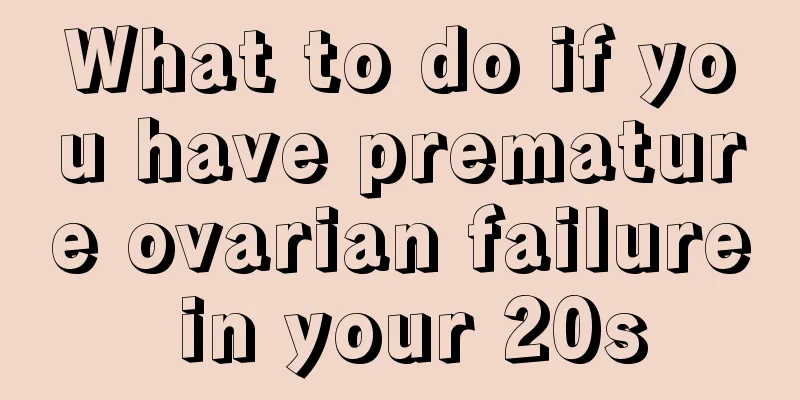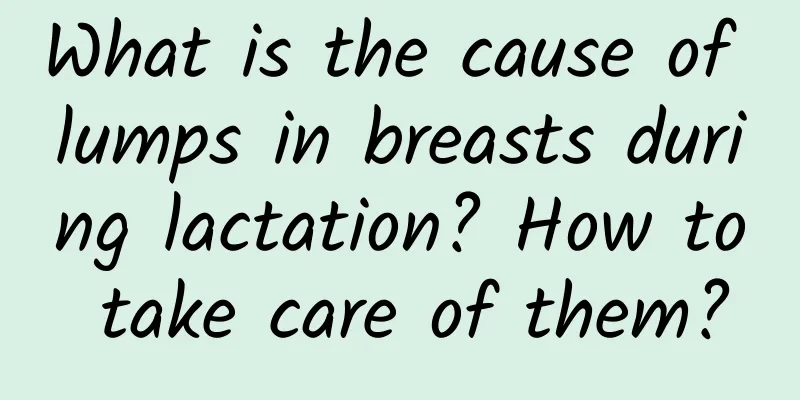What to do if you have premature ovarian failure in your 20s

|
Premature ovarian failure is a disease that seriously troubles girls. Some girls begin to suffer from premature ovarian failure at a young age, in their twenties, which needs to attract everyone's attention. If you don't pay attention and leave it alone, it will lead to continued deterioration of the ovaries and even a decrease in the girl's sexual desire, which is not conducive to the harmonious communication between husband and wife and will cause more life troubles. So, what should you do if you suffer from premature ovarian failure in your 20s? 1. Estrogen-progesterone replacement therapy (HRT) Estrogen-progesterone replacement therapy is very important for young POF patients. It can relieve the symptoms of low estrogen and urogenital tract atrophy (in preparation for donated egg embryo transplantation), prevent long-term complications (osteoporosis, Alzheimer's disease, etc.), and reduce the risk of colon cancer by 37%. However, long-term HRT also has certain risks, such as the occurrence of endometrial cancer and breast cancer. However, studies have shown that estrogen-progesterone replacement therapy with progesterone for more than 10 days per month can reduce the risk of endometrial cancer to almost zero, while slightly increasing the risk of breast cancer, but the mortality rate does not increase. Usually a combination of estrogen and progesterone is used. Before applying HRT, an individualized balance of pros and cons should be made, and necessary monitoring and follow-up should be carried out. 2. Prevent osteoporosis In addition to HRT, ensure 1200 mg of calcium intake per day. Vitamin D 400-800 IU/day, and engage in necessary physical exercise, such as walking, yoga or Tai Chi. 3. Ovulation induction therapy There are many reports in the literature about the successful experience of inducing ovulation in POF patients. The conditions for screening patients before treatment are mostly short amenorrhea duration, not too high blood FSH level, and clinical diagnosis of follicular POF. Generally, after HRT or GnRHa is used to suppress endogenous gonadotropin (mainly FSH) to a lower level (<20IU/L), sufficient hMG/hCG is given to induce ovulation while ultrasound monitoring is performed. The hMG dosage is required to be large and the duration is long. The theoretical basis for the success of down-regulation in ovulation induction is that after down-regulation, the endogenous FSH level decreases, the number of FSH receptors on the surface of granulosa cells increases, and the sensitivity of the ovaries is increased. 4. Immunotherapy Because immune factors are a definite cause of premature ovarian failure, immunosuppressive treatment is effective for patients with premature ovarian failure who have evidence of immune factors. There have been multiple reports of pregnancy occurring during immunosuppressive therapy. So far, there is no clear method to identify the role of immune factors in POF, nor is there a clear indication for immunotherapy and a standardized medication regimen. Immunosuppressive therapy can cause serious side effects, so blindly using immunosuppressants to treat POF is not recommended clinically. 5. DHEA Treatment 50% of DHEA is secreted by the zona reticularis of the adrenal cortex, 20% is secreted by the ovaries, and 30% is converted from peripheral DHEAS. 6 to 8 mg is produced in the body every day, and the blood concentration is 3 to 35 nmol/L. Its level decreases with age. DHEA is an important substance for the synthesis of androstenedione, testosterone and estradiol. The level of DHEA affects the levels of these hormones. 6. Donated egg embryo transfer In 1984, Lutjen et al. reported the world's first case of a live newborn obtained through donation of oocytes from a woman with premature ovarian failure, providing a way for POF patients to have children. So far, donated oocyte embryo transfer is still the most effective treatment for POF patients to achieve pregnancy. 7. Ovarian transplantation In October 2004, Donnez J et al. reported for the first time a case in which cryopreserved human ovarian tissue was autotransplanted to restore ovarian function and give birth to a live fetus. In the following years, there were several reports of successful ovarian cryopreservation and transplantation, leading to pregnancy and birth. |
<<: What to do if you have a cyst on your ovary
>>: Will I have breast pain during early pregnancy?
Recommend
Can I eat vermicelli during menstruation?
Rice noodle skin is a favorite choice of many peo...
I lost a lot of weight after giving birth, what should I do?
Most pregnant women hope that their body shape ca...
If you are infected with HPV, are you still far from cervical cancer? Do these 5 things to effectively prevent cervical cancer!
Talking about cervical cancer Is HPV the first th...
Is it normal to have your period for only three days?
Menstrual irregularity is a common disease among ...
What to do if the white blood cell count in a pregnant woman's blood is high
After pregnancy, regular physical examinations ar...
New Productivity | Can artificial intelligence screen anti-tumor drugs? Liangzhu Laboratory team collaborates to develop a new deep learning framework
In ancient times, Shennong tasted hundreds of her...
What is the impact of nephritis in pregnant women on the fetus?
Nephritis can cause great harm to humans. No matt...
What is the cause of bilateral fallopian tube obstruction in women?
Many women have bilateral fallopian tube blockage...
How long does it take for bleeding to occur after abortion?
For many friends, this is the first time they hav...
What causes endometrial hyperplasia?
Endometrial hyperplasia is related to many factor...
What should I do if I have sex before my period is completely over?
The immune system of women during menstruation is...
"Wolf Warrior" Handbook | Long-term treatment, rational use of drugs, and winning the "protracted war"
Systemic lupus erythematosus (SLE) is an autoimmu...
White pimples on female private parts
Women's private parts are more prone to infla...
Deloitte Consulting: 2018 China Mobile Consumer Research Report
Today, Deloitte China's core service team for...
What is the fastest way to enlarge breasts?
Flat chest is the sorrow of many women. Just like...









